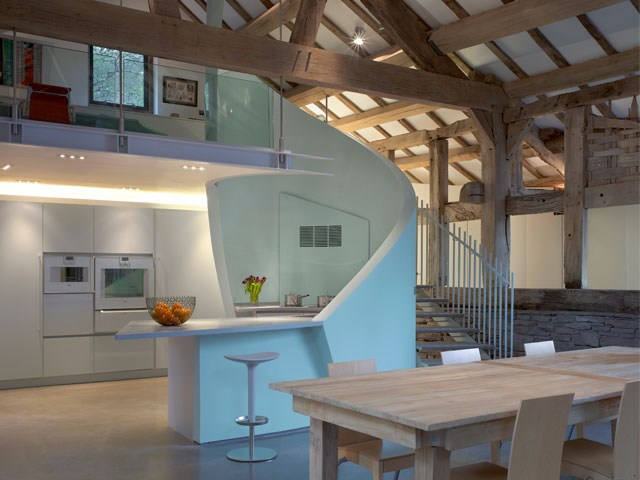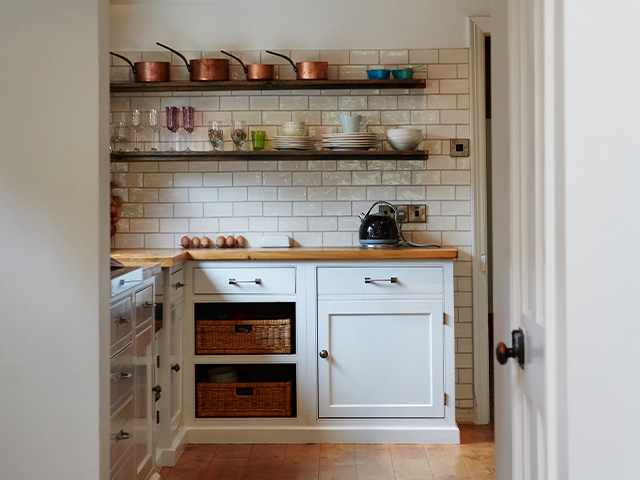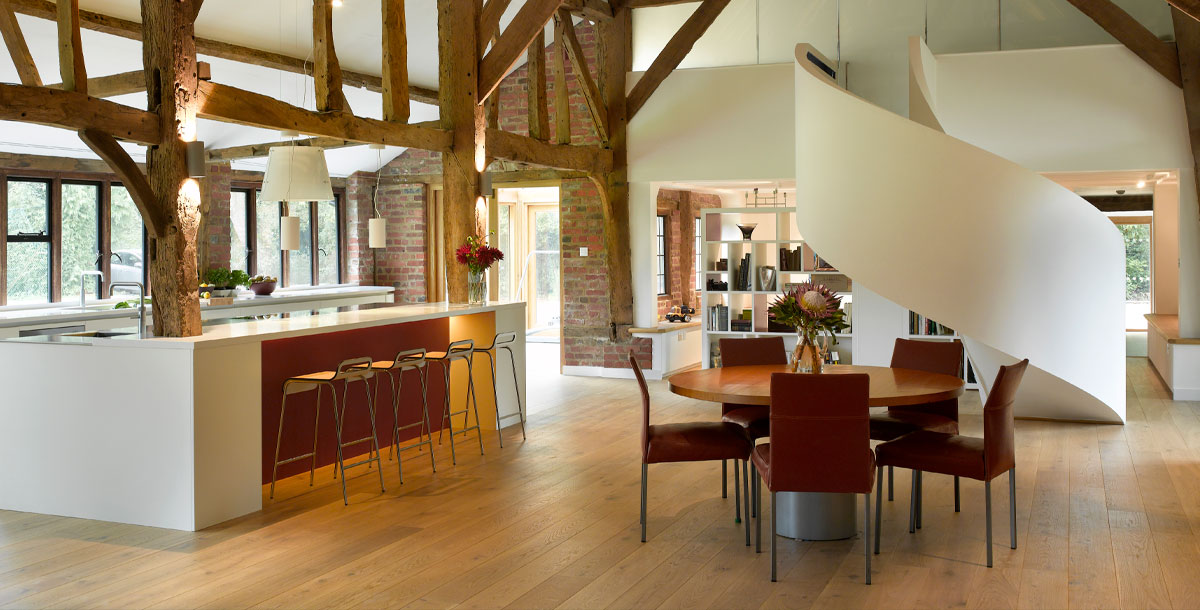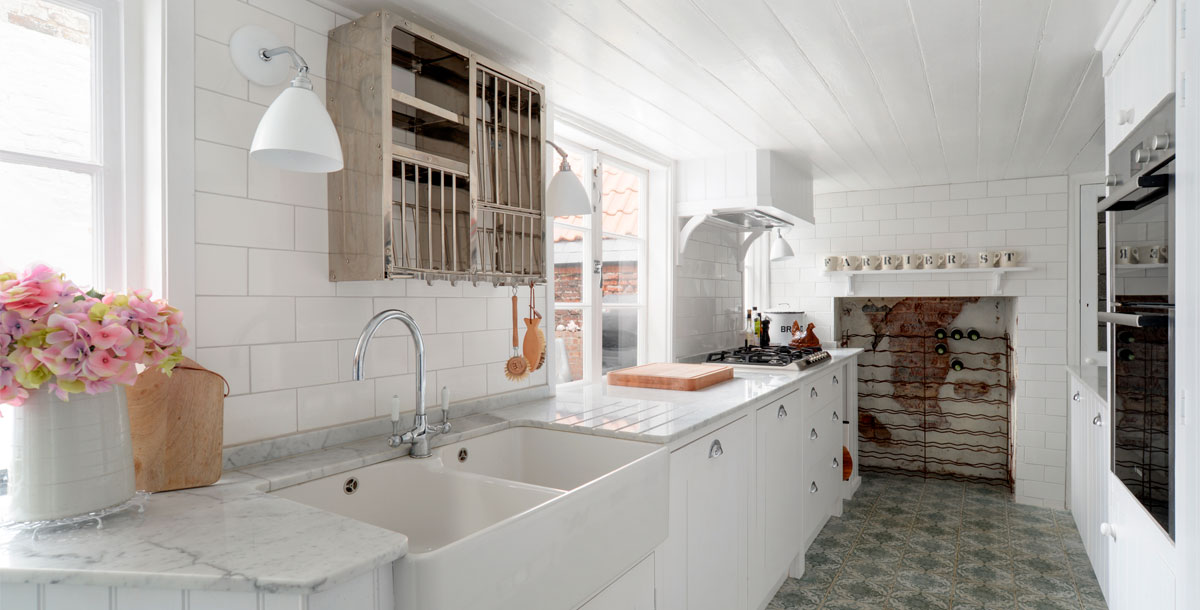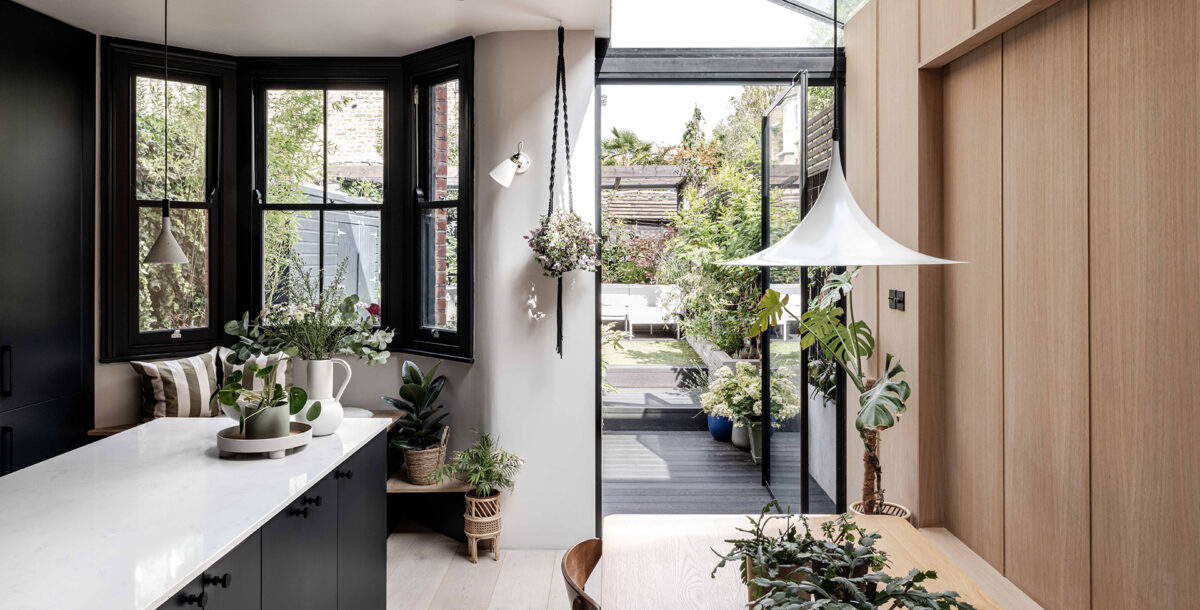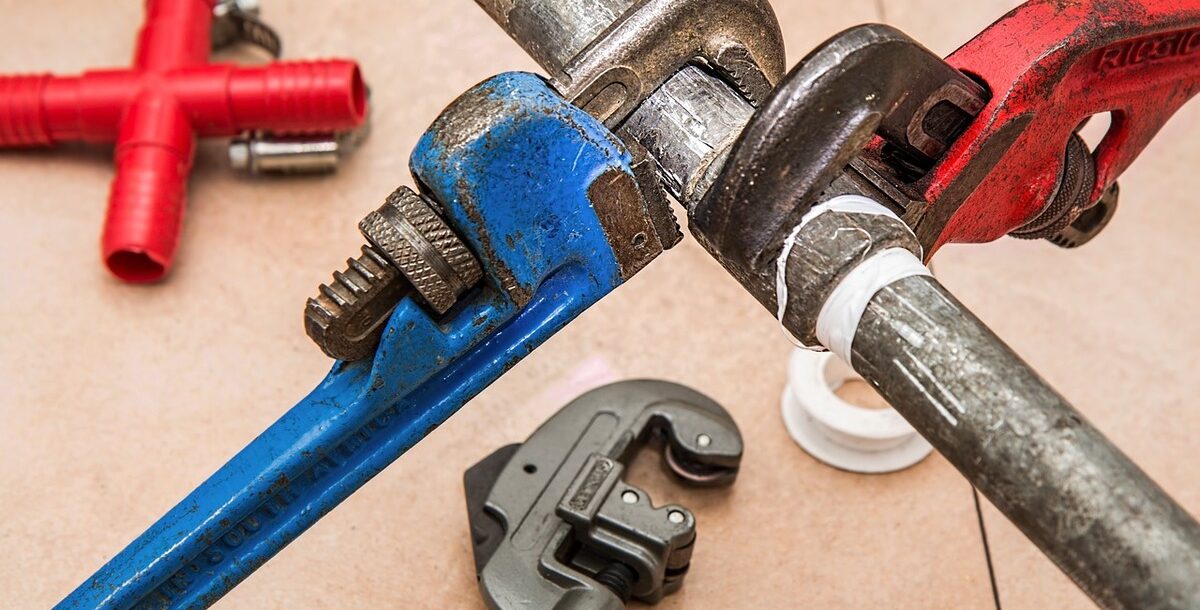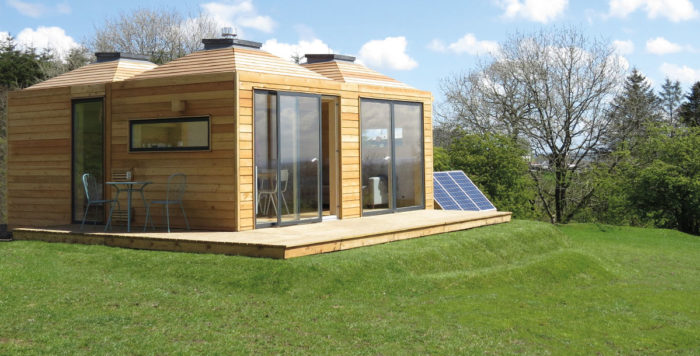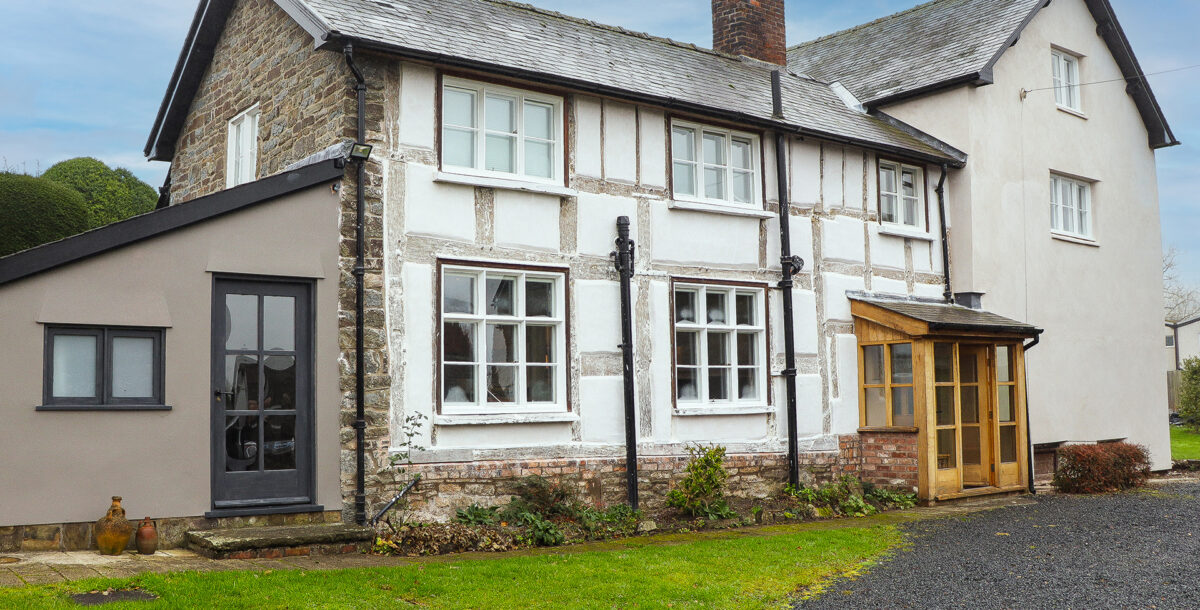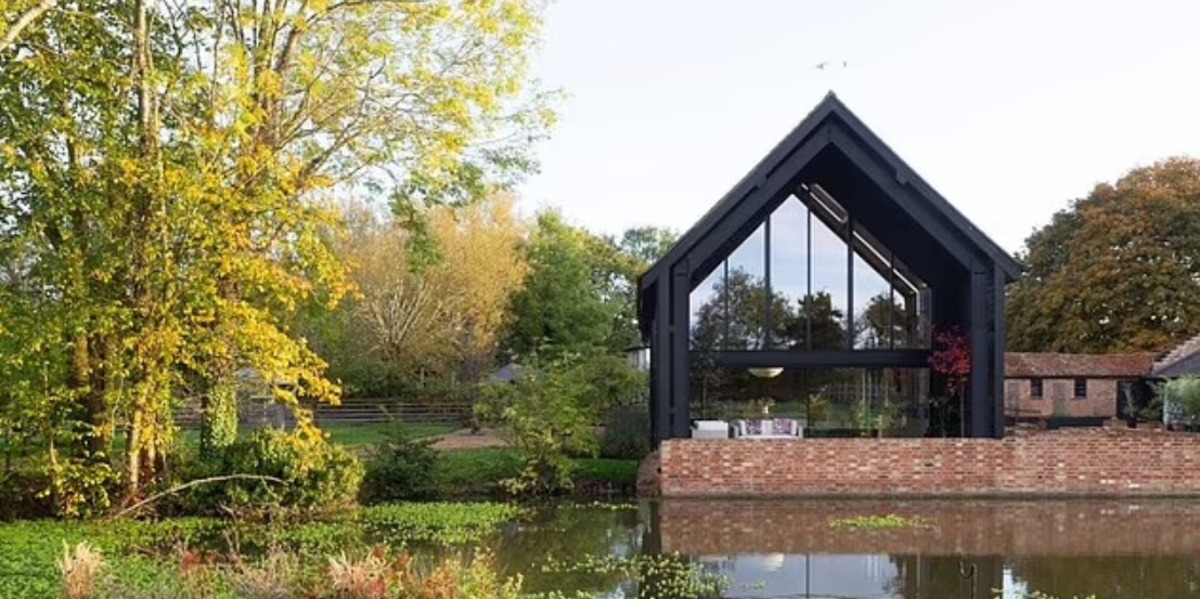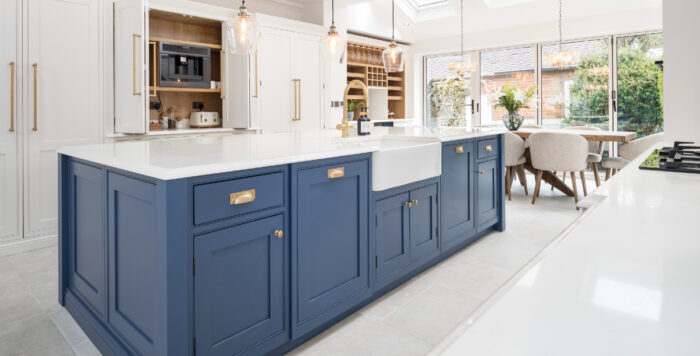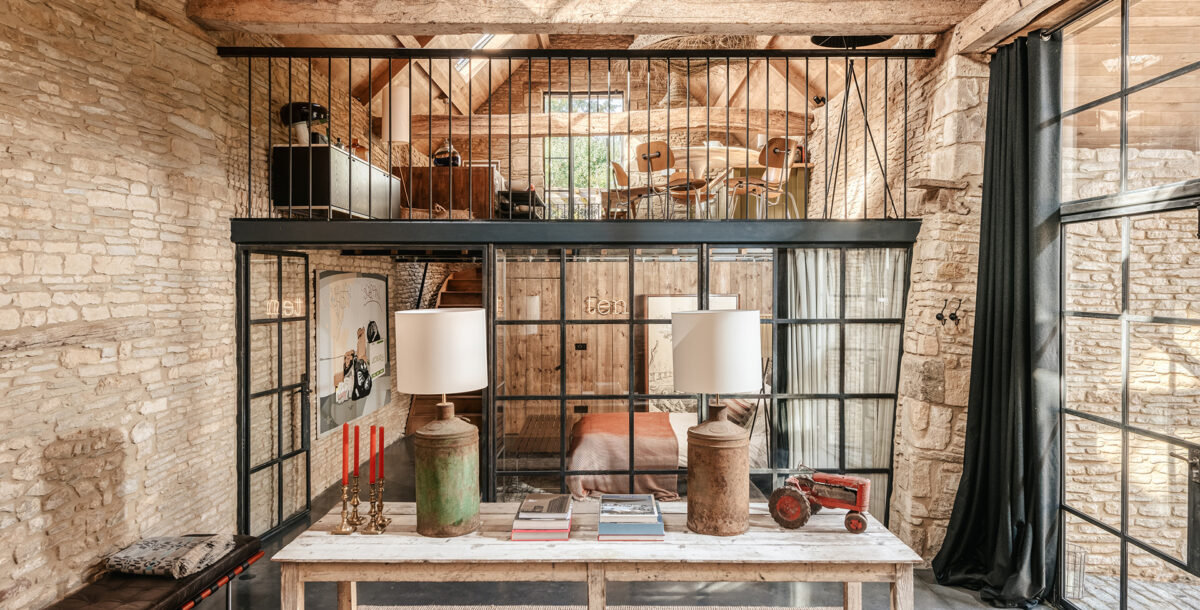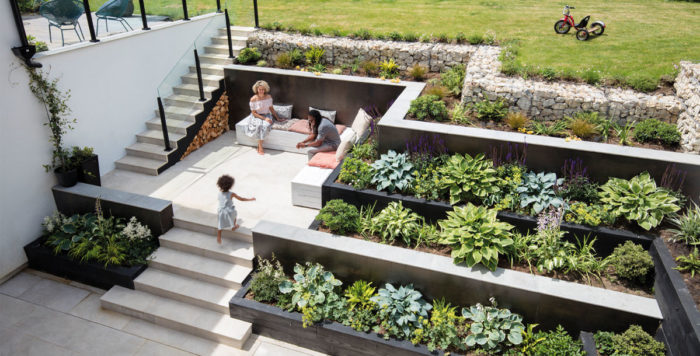Classic or contemporary?
There are two main concerns when selecting a style of kitchen for a period property. A like-for-like design will include traditional features, such as handmade, painted or natural wood cabinets with in-frame doors and a range cooker.
A contemporary approach can also work thanks to its eye-catching contrast. The idea is to make a distinct break and incorporate clutter-free clean lines, quartz worksurfaces, handleless units and integrated appliances.
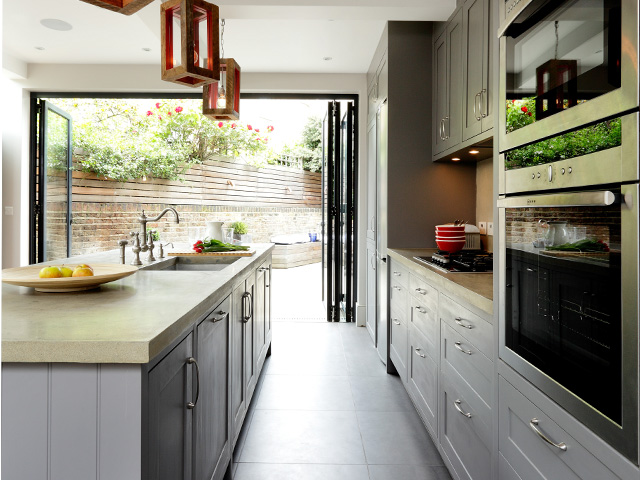
This Bovingdon kitchen by Cue & Co of London is in solid oak veneer and tulipwood, painted in Little Greene’s dark lead
Whichever style you opt for, bespoke furniture has an advantage over off-the-shelf versions, in that it will be precision-made to fit architectural features, such as sloping ceilings and wonky walls.
Freestanding cabinets can also be a good solution, as you can change the layout with ease and even take them with you if you move. Island units, work tables, benches, trolleys and larder cupboards are all compatible with a classic setting.
Practical details
Decisions about style and design aside, there is a crucial, practical matter to consider early on. ‘The ceiling height of your home is an important consideration,’ advises Richard Moore, design director at Martin Moore. Some properties have ceilings that are too low for standard wall cupboards or tall appliance housings. A furniture maker will be able to supply shorter-height wall cupboards.’
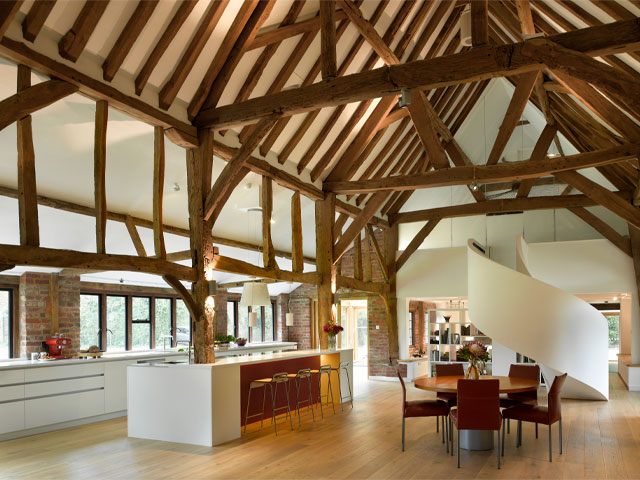
Old meets new in this barn, with a kitchen by Roundhouse Urbo
Weigh up the benefits
Tom-Jones Marquez, director at Bath Bespoke, provides his advice on designing for an older house
• Bringing sufficient light into a period property can pose a challenge as older houses tend to have small windows, while smaller rooms mean that a dream of open-plan living is sometimes not possible. On top of which, planning permission can become a battle to try and ease an old building into a form that suits modern living.
• So it’s crucial to balance all of the options and assess whether it’s worth putting in a planning application for opening up the space and adding windows or doors? If not, there are design solutions such as using semi-reflective materials to bounce light around and keeping the space fairly minimal. Contemporary kitchens often achieve this more effectively than classic styles, which tend to look heavier. Can other rooms be used to help out? Maybe, turning a cupboard into a pantry.
• To make a smaller space feel bigger, hide everything away and avoid open shelves. Tiny rooms need everything hidden behind doors or drawers.
• The larder can be a key feature including lots of internal drawers and spice racks for storage. Plan carefully which food types will be going where, so that you have an efficient arrangement of shelves. ‘Cook centres’ are also very useful. Imagine a 1200mm wide, full height four-door larder with a worktop inside for food processors and toasters. The doors are bi-fold or slide back into pockets, reducing clutter.
• Maintain the character of an old building by paying attention to the architecture. Line up the sink with stone mullions or glazing bars, for instance.
RELATED ARTICLES
